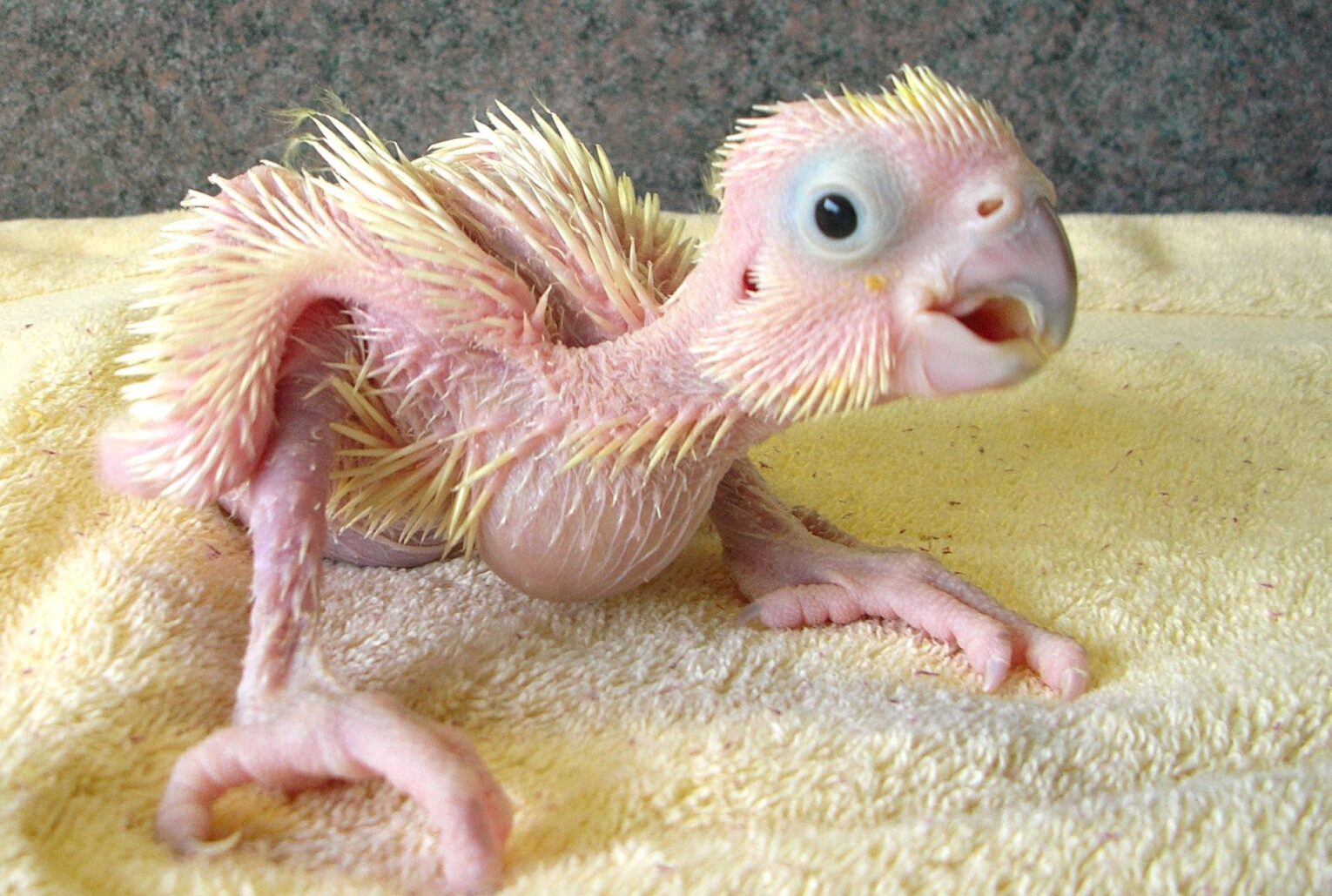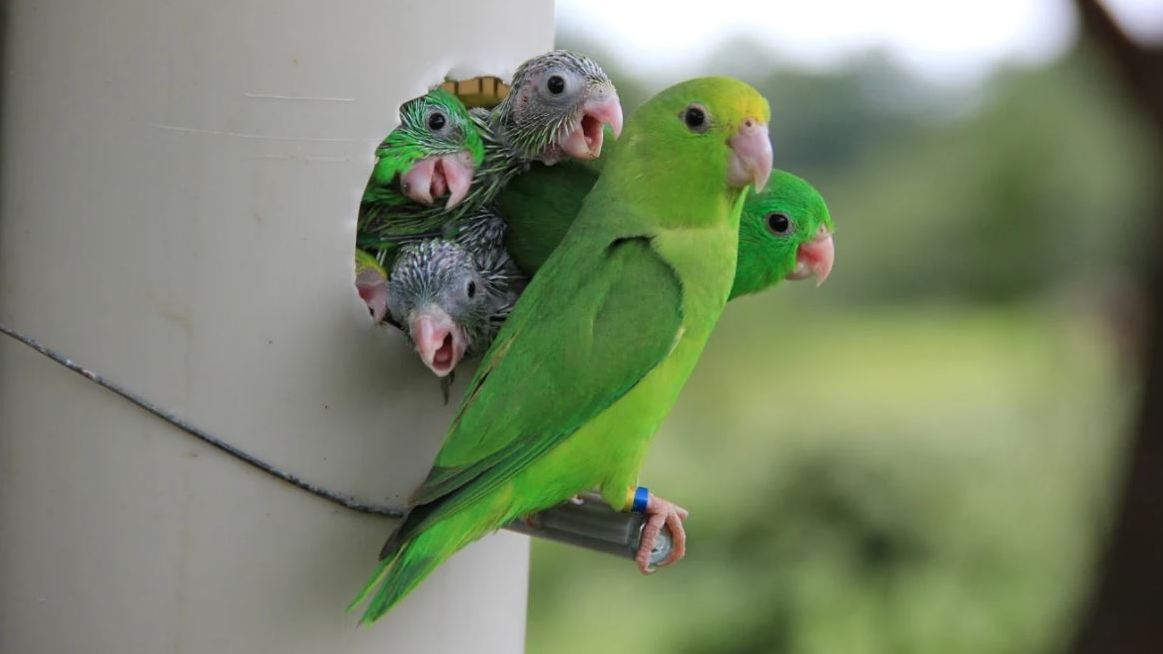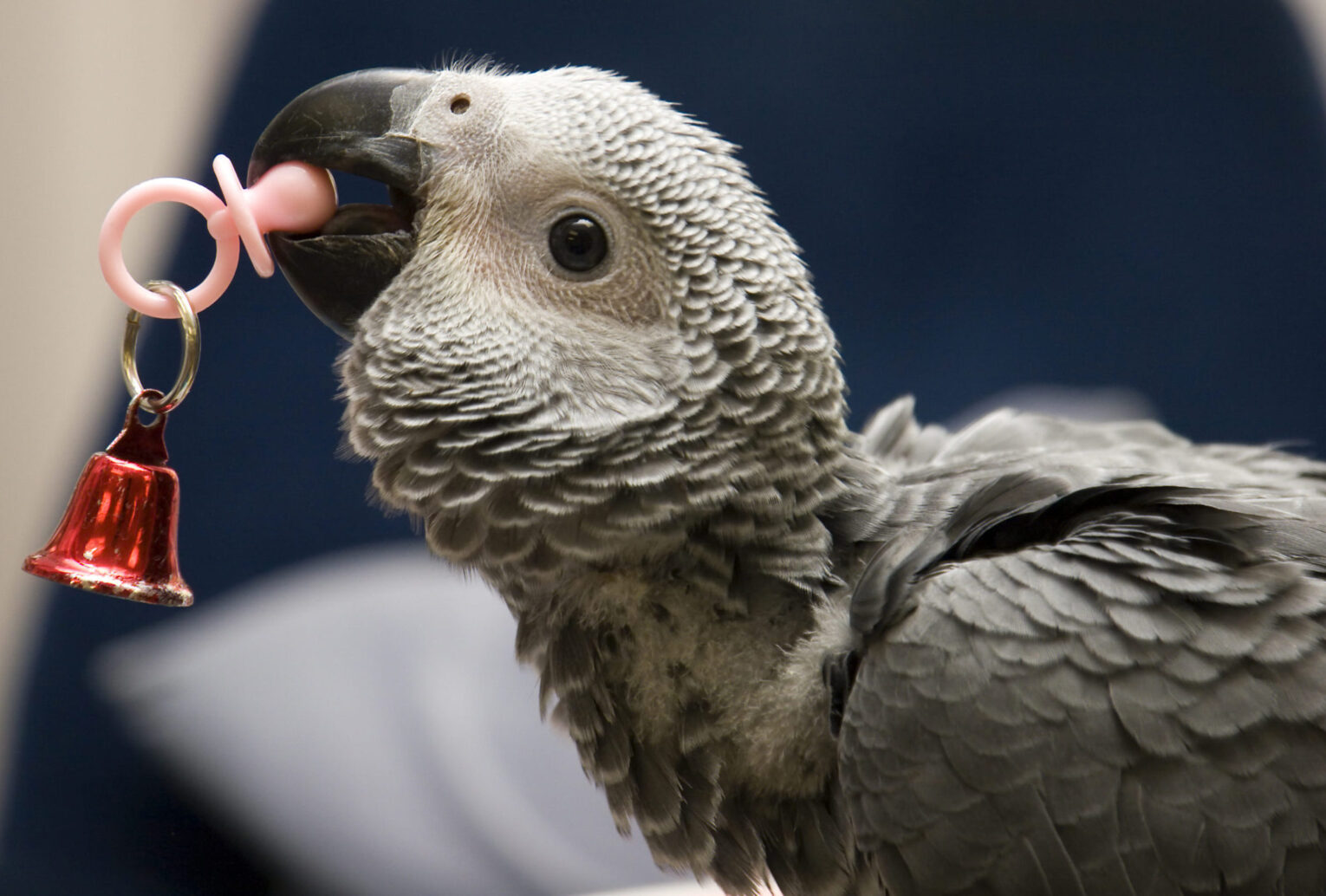
Welcome to the enchanting journey of raising baby parrots, a path filled with joy, learning, and the unique bond that forms between you and your feathered companion. In this chapter, we embark on an exploration of the early stages of a parrot’s life, delving into both the delights and the challenges that come with nurturing these intelligent and charismatic birds.
The decision to bring a baby parrot into your home is the beginning of an extraordinary adventure. These young birds, with their curious eyes and playful antics, can bring a burst of life and energy into any environment. Yet, with all the joy they bring, it’s crucial to remember that raising a baby parrot is a substantial commitment. It requires patience, understanding, and a dedication to their well-being and development.
One of the most crucial aspects of this journey is early training and socialization. Baby parrots are not just pets; they are intelligent beings with the capacity to learn, feel, and develop deep bonds. The initial months of your baby parrot’s life present a golden opportunity to lay the foundation for a well-adjusted, happy, and sociable companion. Proper training and socialization during this phase are essential. They not only shape your bird’s behavior and temperament but also significantly impact their quality of life and their relationship with you.
In this comprehensive guide, we will walk through the essential training tips for baby parrots. From understanding their unique needs and communication styles to establishing routines and building trust, we aim to equip you with the knowledge and tools necessary to guide your baby parrot through their formative stages. We’ll cover techniques that respect and nurture their natural instincts, ensuring that your baby parrot grows into a confident, well-behaved, and affectionate companion.
So, whether you’re a first-time parrot parent or an experienced avian enthusiast, this guide is designed to support you in the rewarding task of raising a baby parrot. Stay tuned as we delve deeper into the world of these fascinating creatures, uncovering the secrets to a successful, joyful, and fulfilling journey together.

Getting Started with Basic Commands
Embarking on the training journey with your baby parrot is both an exciting and pivotal aspect of their development. In this chapter, we focus on the fundamentals of teaching basic commands. Starting with simple commands is not just about training your parrot; it’s about establishing a communication channel, building trust, and setting the groundwork for a harmonious relationship.
The Importance of Simple Commands
Initiating training with straightforward commands plays a critical role in your parrot’s overall development. These commands are the building blocks of more complex interactions and behaviors. They help in shaping a well-behaved, confident, and sociable bird. Moreover, mastering these basic commands early on makes future training smoother and more effective.
Step-by-Step Guide to Basic Commands
‘Step Up’ Command:
- Preparation: Start by getting your parrot comfortable with your presence. Spend time near their cage and talk softly to build trust.
- Technique: Gently present your finger or a perch at the bird’s chest level, slightly touching their lower belly. This touch prompts them to step up as a natural reflex.
- Cue and Reward: Use the phrase ‘step up’ each time. When they respond correctly, immediately offer praise or a small treat as a reward.
‘Come’ Command:
- Start Close: Begin with short distances within a comfortable and safe space.
- Use a Lure: Hold a favorite treat in your hand to entice them towards you. As they approach, say ‘come’.
- Gradual Increase: Slowly increase the distance as they get more confident with the command.
‘Stay’ Command:
- Teach ‘Stay’: Once your parrot is comfortable stepping up and coming to you, introduce the ‘stay’ command.
- Use Hand Gestures: A hand signal, such as an open palm, can be effective. Say ‘stay’ and take a step back.
- Reward Brief Stays: Initially, reward them for staying put for even a few seconds, gradually increasing the duration.
Tips for Positive Reinforcement and Patience
- Consistency is Key: Use the same words and gestures each time to avoid confusing your parrot.
- Positive Reinforcement: Always use positive reinforcement like treats, praise, or gentle petting to encourage desired behavior.
- Short Training Sessions: Parrots have short attention spans, so keep sessions brief but regular.
- Be Patient: Patience is vital. If a session doesn’t go well, take a break and try again later.
- Observe Their Mood: Pay attention to their body language and mood. Training should always be a positive and stress-free experience for them.
By following these guidelines, you can successfully teach your baby parrot basic commands, laying a foundation for a mutually respectful and understanding relationship. Remember, training is not just about obedience; it’s about enhancing the bond you share with your feathered friend.
Socialization and Interaction Techniques
In the early stages of a baby parrot’s life, socialization plays a pivotal role in shaping their personality and future interactions. This chapter delves into why socialization is crucial for baby parrots and offers effective techniques for familiarizing them with various people, pets, and environments. We will also explore strategies to mitigate common behavioral issues such as biting and screaming.
Importance of Socialization for Baby Parrots
Socialization is the process through which a baby parrot learns about its surroundings, understands how to interact with different stimuli, and becomes accustomed to various environments and beings. Effective socialization helps prevent fearfulness and aggressive behaviors in parrots and nurtures them into well-adjusted, confident birds. It’s essential for their mental well-being and helps in developing a friendly, sociable, and engaging companion.
Techniques for Familiarization
Gradual Introduction to People:
- Start by introducing your baby parrot to family members and frequent visitors. Encourage gentle interaction and allow the bird to approach people at its own pace.
- Use treats as positive reinforcement when they interact calmly with new people.
Acclimating to Other Pets:
- If you have other pets, it’s crucial to supervise all interactions closely. Start with short, controlled meetings to gauge reactions.
- Ensure your parrot has a safe space to retreat to if they feel threatened or overwhelmed.
Exposure to Different Environments:
- Gradually expose your parrot to different rooms in your home. Use a portable perch or a cage to move them around safely.
- As they grow more comfortable, you can introduce them to outdoor environments, ensuring their safety and comfort at all times.
Strategies to Avoid Behavioral Issues
Biting:
- Understand the triggers for biting, such as fear, territorial behavior, or overexcitement.
- Teach gentle behavior by using a firm ‘no’ when they bite and praising gentle interactions.
- Avoid physical punishment as it can lead to more aggression.
Screaming:
- Recognize that some vocalization is natural, but excessive screaming can be a sign of distress, boredom, or seeking attention.
- Ensure they have enough mental stimulation with toys and regular interaction.
- Do not scream back or overly react, as this can reinforce the behavior. Instead, respond calmly or divert their attention.
Regular Interaction and Bonding:
- Spend quality time with your baby parrot daily. Regular playtime and cuddling help strengthen your bond and provide necessary social interaction.
- Training sessions are also excellent for bonding and mental stimulation.
Creating a Routine:
- Establish a consistent daily routine, as predictability can be comforting and help avoid stress-related behaviors.
Socialization and interaction are ongoing processes that require time, patience, and understanding. By employing these techniques, you can help your baby parrot grow into a well-socialized and contented companion, capable of adapting to various situations with confidence and ease. Remember, the experiences and training you provide during these formative months will shape their behavior and personality for years to come.
Nutritional Needs and Health Care
Raising a baby parrot is a rewarding endeavor, and a crucial aspect of this journey is understanding and providing for their nutritional needs. Nutrition plays a significant role not only in their physical growth but also in their cognitive development and behavior. In this section, we will explore the dietary essentials for baby parrots, how their diet impacts training and overall health, and provide basic health care tips, including signs of potential health issues.
Nutritional Needs of Baby Parrots
Balanced Diet:
- Baby parrots require a diet rich in various nutrients for optimal growth. This diet includes specialized formulas designed for baby birds, known as hand-feeding formulas, when they are very young.
- As they grow, their diet should gradually transition to include high-quality pellets, fresh fruits, and vegetables, complemented by a limited amount of seeds and nuts.
- Avoid foods that are toxic to birds, such as avocado, chocolate, and caffeine.
Proper Weaning:
- Weaning is a critical stage where the baby parrot transitions from hand-feeding formula to solid food. This process should be gradual and monitored closely to ensure the bird is accepting and properly digesting the new foods.
- Weaning foods should be easy to digest and enticing to the baby parrot, encouraging them to explore and try new tastes.
Hydration:
- Access to fresh, clean water is essential. Baby parrots should be encouraged to drink water as they start eating solid foods.
Diet’s Impact on Training and Health
Training and Diet:
- A well-fed parrot is more likely to be alert and responsive during training sessions. Nutritional treats can be used effectively as rewards during training, but should be given in moderation.
- Deficiencies in diet can lead to health issues, affecting the bird’s energy levels and concentration, thereby impacting training effectiveness.
Overall Health:
- A nutritionally balanced diet supports the development of strong bones, a healthy plumage, and a robust immune system.
- Poor nutrition can lead to various health problems, including vitamin deficiencies, obesity, and behavioral issues like feather plucking.
Basic Health Care Tips
Regular Veterinary Check-ups:
- Schedule regular visits with an avian veterinarian for check-ups, vaccinations, and any necessary treatments.
- An early health check can identify congenital health issues that might require special care.
Monitoring Health:
- Be vigilant for signs of illness, such as changes in appetite, lethargy, ruffled feathers, unusual droppings, or changes in breathing.
- Early detection and treatment of health issues are critical for the well-being of your baby parrot.
Safe Environment:
- Ensure the living environment is safe and free from hazards such as toxic plants, open water sources, and unsafe toys.
- The cage and its surroundings should be regularly cleaned and sanitized.
Understanding and catering to the nutritional needs and health care of your baby parrot lays the foundation for a long, healthy, and joyful life. A well-nourished and healthy baby parrot is more likely to be a happy, active, and trainable companion. Remember, the commitment you make to their health and nutrition in these early stages will profoundly impact their quality of life in the years to come.

Advanced Training and Long-Term Care
As your baby parrot matures and masters the basic commands, you can embark on the next exciting phase of training: teaching tricks and complex behaviors. This stage not only reinforces the bond between you and your parrot but also keeps their mind sharp and engaged. In this chapter, we’ll explore advanced training techniques and underscore the importance of understanding the long-term commitment required in caring for a parrot. Additionally, we’ll introduce resources for continuous learning and community support, ensuring you and your feathered companion thrive together.
Advanced Training Techniques
Building on the Basics:
- Once your parrot is comfortable with basic commands like ‘step up’, ‘come’, and ‘stay’, you can gradually introduce more complex tricks such as waving, spinning, or fetching objects.
- Each new trick should be broken down into small, manageable steps, rewarding your parrot at each stage of learning.
Consistent Practice:
- Regular, short training sessions are more effective than occasional, long ones. Consistency helps reinforce learning and keeps your parrot engaged.
- Always end training sessions on a positive note to keep the experience enjoyable for your bird.
Mental Stimulation:
- Advanced training provides excellent mental stimulation, which is crucial for your parrot’s well-being. It helps prevent boredom and associated behavioral issues like feather plucking or excessive screaming.
Understanding Long-Term Parrot Care
Lifelong Commitment:
- Owning a parrot is a long-term commitment, often spanning several decades. It’s essential to consider your lifestyle, including time, resources, and stability, to ensure you can provide continuous care.
Evolving Care Needs:
- As parrots age, their dietary and healthcare needs may change. Regular check-ups with an avian veterinarian are vital to monitor and address any age-related health issues.
Environmental Enrichment:
- Providing a stimulating environment with various toys, perches, and opportunities for exploration is crucial for your parrot’s physical and mental health.
Resources for Continuous Learning and Community Support
Educational Resources:
- Books, online courses, and webinars specific to parrot care and training can be invaluable resources. Staying informed about the latest in avian care ensures you provide the best for your bird.
Joining Communities:
- Becoming part of local or online parrot communities can provide support, share experiences, and offer advice. Bird clubs and online forums are great for connecting with fellow parrot enthusiasts.
Professional Guidance:
- Don’t hesitate to seek advice from avian experts or trainers, especially when dealing with behavioral challenges or advanced training techniques.
In conclusion, advancing into complex training and understanding the nuances of long-term care are integral parts of the journey with your parrot. By committing to continuous learning and leveraging community support, you can ensure a fulfilling and enriching life for both you and your parrot. Remember, the depth of your relationship with your parrot is a reflection of the time, love, and dedication you invest in their care and training.
FAQ’s
Here are 10 frequently asked questions about advanced training and long-term care for parrots, with comprehensive answers:
How do I start teaching my parrot advanced tricks?
- Begin with tricks that are a natural progression from basic commands. Break down each trick into small, manageable steps and use positive reinforcement. Consistency and patience are key.
How often should I train my parrot for advanced tricks?
- Short, daily training sessions are more effective than infrequent, long ones. Even 10-15 minutes per day can yield significant results.
What are some advanced tricks I can teach my parrot?
- Some popular tricks include waving, shaking hands, playing dead, retrieving objects, and speaking on cue. Choose tricks that match your parrot’s personality and interest.
How can I keep my parrot mentally stimulated?
- In addition to training, provide a variety of toys, puzzles, and foraging activities. Regularly change their environment with new perches or rearrange their cage to keep things interesting.
What should I do if my parrot loses interest in training?
- Take a break and try again later. Ensure the training sessions are fun and not too repetitive. Sometimes changing the training routine or introducing new rewards can reignite their interest.
How long does a parrot live, and what are the implications of this lifespan?
- Parrots can live for several decades, with some species living up to 50 years or more. This long lifespan means a long-term commitment, requiring continuous care and attention throughout their life.
What are common age-related health issues in parrots?
- Older parrots may face issues like arthritis, kidney disease, hormonal imbalances, and vision problems. Regular veterinary check-ups are essential for early detection and management.
How do I handle behavioral issues like biting or excessive screaming?
- Identify the root cause of the behavior, which could be boredom, fear, or seeking attention. Address the cause directly, maintain consistency in your response, and use positive reinforcement to encourage desired behavior.
Where can I find resources for continuous learning about parrot care?
- Avian care books, online forums, bird clubs, and professional trainers are great resources. Keeping up-to-date with avian research and joining online communities can also be beneficial.
Is it necessary to have a vet specialized in birds?
- Yes, avian vets have specialized knowledge in bird health and are better equipped to handle the specific medical needs of parrots. Regular check-ups with an avian vet are crucial for maintaining your bird’s health.
